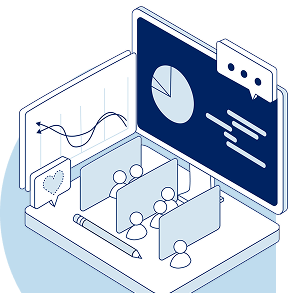Gamified Building Engagement: Landlord of the Future Part 3
UrbanSense’s last installment of its “Landlord of the Future Series” (See part 1 and part 2 to learn more) culminates with an idea of using AI to “gamify” spaces, another way that commercial real estate developers can shift from passive real estate operators into active community orchestrators.
Commercial real estate operators have another tool to attract tenants, drive satisfaction and reduce turnover: AI-powered gamification. Transforming static properties into dynamic, engaging environments might sound gimmicky, but game mechanics like point systems, challenges, and rewards can create personalized experiences that encourage tenants to explore amenities, participate in building communities, and even optimize their space usage patterns.
Broadly speaking, gamification not only engages tenants and employees through reward distribution, it also provides insights that help landlords understand and respond to tenant needs and even bring significant business value. The goal with gamification is to transform a building or district into a community platform that people want to be part of.
The Landlord Advantage
Gamified engagement has long been used internally by companies to motivate employees around sales, motivating work life balance and doing trainings but for landlords and building operators, gamification represents a new opportunity - one in which they are uniquely suited because they control the building-wide infrastructure, community dynamics, and shared experiences outside of individual offices that make true gamification possible. Landlords can also serve as neutral facilitators who can create fair, unbiased competition frameworks, implement building-wide policy changes based on game outcomes and provide shared resources and spaces as prizes/rewards.
They also already possess many of the technologies in place to drive engagement - namely modern platforms that aggregate multiple technologies into a single command center including access control, visitor registration, building amenities, HVAC and communications systems to make this possible. In any given building, sensors are monitoring, software is synthesizing information into dashboards and front-end user interfaces are adapting - all providing a rich environment for feedback loops and real-time updates.
HOW TO GAMIFY ASSETS
There are a number of ways landlords can gamify their assets, but a popular one is around building wide energy and sustainability challenges. Since modern Building Management Systems are well-equipped with real-time energy dashboards and responsive floor-by-floor systems, building-wide or portfolio-wide competitions with live leaderboards can present an opportunity.
One example is Beacon Capital Partners - Energy "STAR" Cup Competition¹ , which was an organized race for the Energy "STAR" Cup among four major tenants in the One Beacon Street building in Boston. The building was well suited for such a competition since electricity use was sub-metered, and the tenants paid for actual electricity used within their space.
After establishing a baseline of electricity consumption for each participant, Beacon Capital encouraged tenants to see how much they could reduce usage over a 4-week period. The property team kept the competitors motivated by displaying the tenants' progress as a car race on a status board.
The winning tenant - Environmental Resources Management (ERM) - crossed the finish line with the greatest savings and was recognized with a catered breakfast and glass trophy. Despite starting at a lower energy per square foot baseline than the other competitors, ERM lowered consumption from its lighting and plug loads by 20% ².
The results were impressive for energy reduction and savings, but for Beacon Capital and ERM - there were longer lasting benefits. Beacon built a deeper relationship with its tenants and ERM was able to demonstrate a commitment to sustainability and energy efficiency to achieve sustainability goals.
Beyond energy conservation, gamification could be applied to safety compliance, recycling or property upkeep and care. Google, for example, runs an internal Sustainable Pursuit program³ based on the LEED framework, in conjunction with the popular board game Trivial Pursuit, to guide the performance of its global campuses. The program pits teams from around the world against each other to compete for points by implementing locally appropriate sustainability initiatives and measures the green performance of their respective built environments.
NEAR AND LONG TERM BENEFITS
In a competitive real estate market, the return on investment for landlords is wide-reaching:
Tenant retention and reduced turnover costs
Beyond the focus of the challenges themselves, landlords can organize tenant engagement events to not only showcase results and encourage social interaction and networking, but also show tenants that property managers are interested in their well being. This can create emotional attachment and community bonds that make tenants much less likely to relocate when leases expire. Since tenant turnover costs can run 6-12 months of rent (between lost income, broker fees, tenant improvements, and marketing), even modest improvements in retention deliver massive ROI. A building that feels like a community rather than just office space becomes "sticky."
Premium pricing power
Buildings with strong engagement platforms can command rent premiums because tenants value the enhanced experience and community amenities. Companies increasingly compete for talent, and a gamified, socially connected workplace becomes a recruiting and retention tool for tenants - making them willing to pay more for space that helps them attract employees.
Operational efficiency gains
Gamified conservation challenges typically reduce building energy consumption, which can optimize based on real behavioral data, not just building automation. For example, the Chicago Neighborhood Energy Challenge⁴ was a six-month pilot competition with 600 participants to reduce energy usage among multifamily and senior living properties in the Humboldt Park and Logan Square neighborhoods. It awarded $40,000 to individuals and properties that decreased energy and water consumption. The winning property received $25,000 to reinvest, while monthly competitions offered $100 prizes for various achievements. The result of that challenge was an average 20% reduction in Electric, Gas, and Water Use and a collective savings of $54,000 on energy bills during the pilot period.
Future-proofing
As younger decision-makers prioritize workplace experience, buildings without community engagement platforms will feel outdated. Offering engagement platforms helps create a moat against commodity real estate competition.
Data-Driven Building Optimization
When tenants report issues through gamified systems (such as points for helpful building feedback), you can catch problems earlier turning the community, in addition to your technologies, into a building monitoring system leading to reduced emergency repairs and extended asset lifecycles. Engagement platforms can also generate rich behavioral data about space utilization, peak usage times, amenity preferences, and tenant satisfaction in real-time. This allows landlords to optimize everything from cleaning schedules to amenity investments, while also providing early warning signals about tenant satisfaction issues before they become lease non-renewals. Bigger picture, this intelligence drives better capital allocation decisions and can justify converting underused areas into revenue-generating amenities.
Competitive differentiation in tight markets
In markets where multiple buildings offer similar square footage and amenities, the gamified community experience could become the differentiator that wins deals. It's particularly powerful with younger companies and tech tenants and employees who expect digital, engaging experiences in all aspects of business.
How can Landlords get started?
Gamification can transform real estate startups and traditional players alike by offering more interactive, personalized, and fun experiences that appeal to modern, tech-savvy consumers. But technology investments can be expensive, and without a coordinated approach and vision, the right outcomes may be difficult to obtain.
UrbanSense’s digital master planning service provides a framework for real estate developers to effectively plan and implement investments in technologies that can yield real-time tenant engagement analytics, space utilization optimization data, community preference insights, and predictive behavior modeling - all of which can help support gamification. Starting with an inventory of desired user experiences and business outcomes, we work backwards to determine the baseline technology and platform requirements and the metrics around them.
By planning and controlling the building-wide technology infrastructure and shared resources, we can help landlords build community dynamics and create gamified experiences that no individual tenant could replicate - turning buildings into engaging, performance-enhancing ecosystems that can build value for operators and create lasting tenant loyalty.
¹ By LeadIQ. (2021, April 15). Beacon Capital Partners Company Overview, Contact Details & Competitors | . https://leadiq.com/c/beacon-capital-partners/5a1d87ba240000240061a9f3
² By Hines. (2025, August 08). All 203 Hines Offices Worldwide Reach Milestone in Sustainability https://www.hines.com/news/all-203-hines-offices-worldwide-reach-milestone-in-sustainability
³ By Grady Andersen & MoldStud Research Team. (2025, June 06). How Communities Successfully Implemented Gamification in Recycling. https://moldstud.com/articles/p-case-studies-how-communities-successfully-implemented-gamification-in-recycling
⁴ Chicago Gov. (2014, July 17). Mayor Emanuel Announces Results of Energy Efficiency Pilot Competition. https://www.chicago.gov/city/en/depts/mayor/press_room/press_releases/2014/jul/mayor-emanuel-announces-results-of-energy-efficiency-pilot-compe.html

Digital master planning
Tactical plans for digital investments in public spaces, from infrastructure to user applications.

Community engagement
In-depth user research, workshops, and surveys to co-create meaningful, user-driven solutions.

Portfolio Scaling
Expansion of successful technology deployments across a broader portfolio, including across agencies, districts and municipalities.



